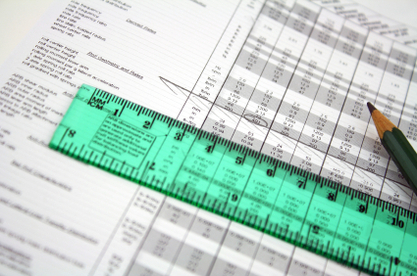***z-above-h1.shtml***
Before analyzing anything, the analyst should determine what he wants to report, and the best way to do this so that the information is clearly laid out. An analyst will be highly regarded if his reports are clear and accurate.
It matters how the reporting looks. A good analyst will take the extra time to make sure the report looks good. Don't add a lot of colors, etc unless it is absolutely necessary to understand the information. The report is a reflection of the analyst.
Check your work, tie it out. Everyone has to do it to be accurate, it is not a flaw to double check your work, it is absolutely necessary.
The analyst should understand how to use the software to be productive, accurate and able to get the results he wants. Also, the analyst should know the data he is working with. If the data is completely foreign, mistakes will be less likely to be caught.
An Accountant is often required to compare this month's financial results to last month's actual results. Or, the current month's actual results are compared to the budgeted amounts for the month. Costs are usually flexed by the change in sales for this analysis. For example, if sales are down 10% from budget, then the financial analysis would adjust the budget by 10% for those costs that are variable (that is, costs that move with sales). Fixed costs, such as rent, are not flexed. By flexing the budget, a useful comparison is made that can be used to drive improvements in the company.
A price and volume financial analysis is often used to understand the sales variance from last month to this month. This requires an analysis at the product or part level. The price of a part is compared to the price of the part last month; the difference is then multiplied by the volume for last month. This gives us the price change. Then, the same is done for volume to determine the amount of the sales change due to volume changes.
If the company has products where the pricing is constantly changing, this analysis needs to be done to understand sales. It also may uncover pricing errors. A further analysis of the pricing changes for each part will determine if the price change is warranted, or an error.
Financial Analysis
Financial analysis is the manipulation of data to provide useful information for the reader, so that it can be used to make informed and intelligent decisions.
An analysis can be performed on countless amounts and types of
information. However, good reporting has several things in common,
regardless of the type of data being manipulated:
- The starting data being analyzed must be accurate
- The analysis is clearly layed out so it requires little or no explanation to be understood.
- The layout is professional looking, with columns lined up properly. Headings are clear and colors, bolding, large fonts, etc are done tastefully.
- All information that has been manipulated should be checked for accuracy against a "tie out" number. If no tie out number is available, a "sanity check" can be used.
- Financial analysis tools are used skillfully by the analyst.
- The analyst should understand the data he is manipulating, so he can determine if the results make sense.

Before analyzing anything, the analyst should determine what he wants to report, and the best way to do this so that the information is clearly laid out. An analyst will be highly regarded if his reports are clear and accurate.
It matters how the reporting looks. A good analyst will take the extra time to make sure the report looks good. Don't add a lot of colors, etc unless it is absolutely necessary to understand the information. The report is a reflection of the analyst.
Check your work, tie it out. Everyone has to do it to be accurate, it is not a flaw to double check your work, it is absolutely necessary.
The analyst should understand how to use the software to be productive, accurate and able to get the results he wants. Also, the analyst should know the data he is working with. If the data is completely foreign, mistakes will be less likely to be caught.
An Accountant is often required to compare this month's financial results to last month's actual results. Or, the current month's actual results are compared to the budgeted amounts for the month. Costs are usually flexed by the change in sales for this analysis. For example, if sales are down 10% from budget, then the financial analysis would adjust the budget by 10% for those costs that are variable (that is, costs that move with sales). Fixed costs, such as rent, are not flexed. By flexing the budget, a useful comparison is made that can be used to drive improvements in the company.
A price and volume financial analysis is often used to understand the sales variance from last month to this month. This requires an analysis at the product or part level. The price of a part is compared to the price of the part last month; the difference is then multiplied by the volume for last month. This gives us the price change. Then, the same is done for volume to determine the amount of the sales change due to volume changes.
If the company has products where the pricing is constantly changing, this analysis needs to be done to understand sales. It also may uncover pricing errors. A further analysis of the pricing changes for each part will determine if the price change is warranted, or an error.